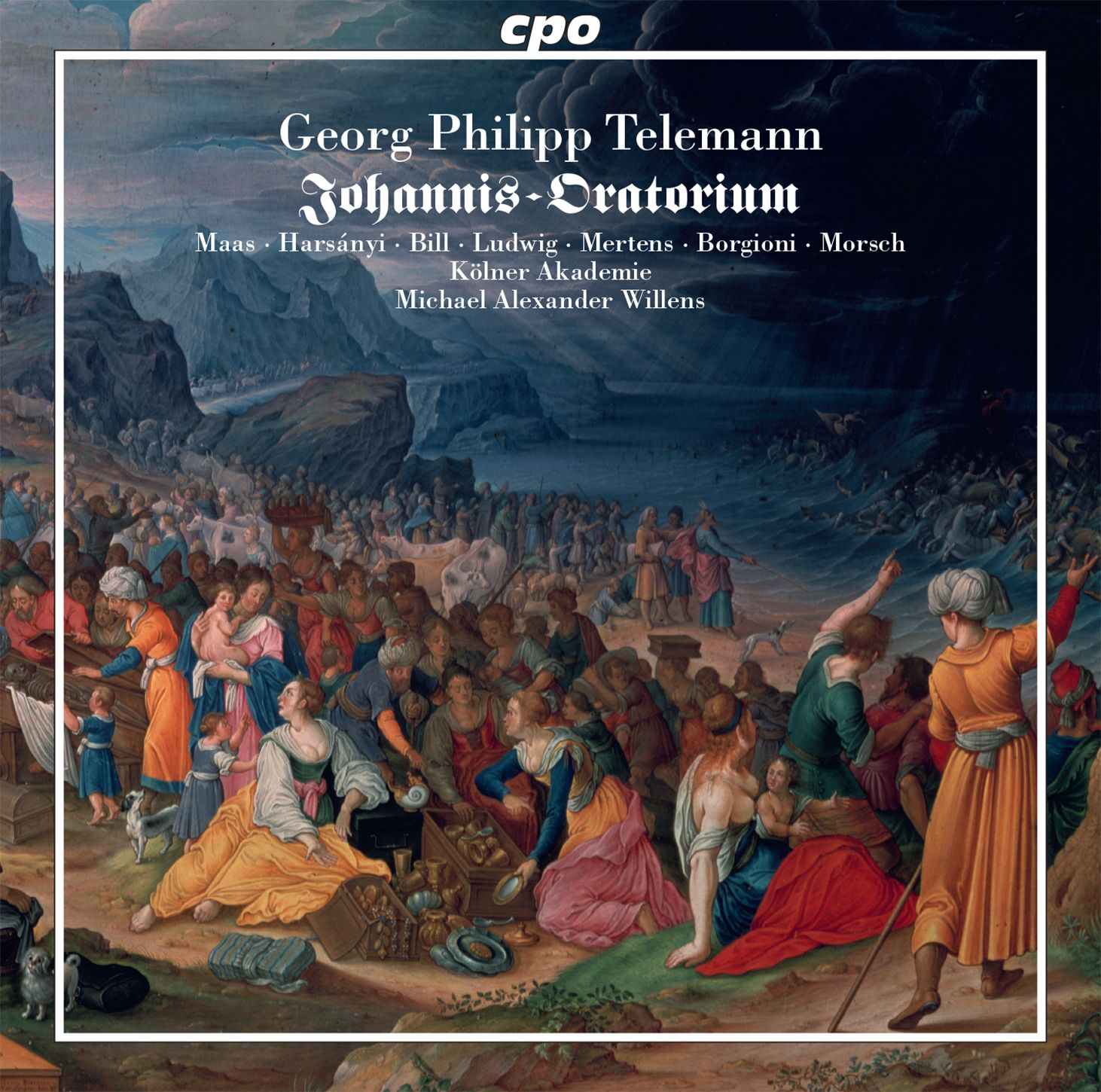Telemann's Johannis-Oratorium: sheer beauty from the Kölner Akademie
A simply gorgeous release ,Telemann at his very best throughout

In the church year 1730/31, Telemann included regular oratorios within the church service. Here, the focus is the magnificent oratorio for the feast of St. John, Gelobet sei der Herr, with expressive texts by the poet and musician Albrecht Jacob Zell.
Zell's writing paintsg dramatic scenes, thus providing Telemann with models for tone-painting. Telemann’s vocal coploists include three basses, while the instrumentation includes the use of four horns and three transverse flutes. Once again, Telemann unfolds a wide range of expression.
Booklet notes explain the basis for this Oratorio (which has the extraordinary catalogue number of TWV 1:602/1216) well:
The Gospel of the Feast of St. John (Luke 1:57–80) tells of the birth and naming of John the Baptist, through which his father finds his lost language. Thus he sings his hymn Gelobet sei der Herr (Luke 1:67–80). Zell connects the hymn and its prophesy of salvation from the hand of enemies to the story of the rescue of the people of Israel in their escape from Egypt, which is reported in Exodus. The actors and speakers are the Pharaoh, Moses and God. The choruses include those of the Israelites, the Egyptians and Miriam with her entourage at the end. The personified applications of faith include “Divine Contemplation”, “Christian Prudence”, “Trust” and “Faith”.
Zell connects the hymn and its prophesy of salvation from the hand of enemies to the story of the rescue of the people of Israel in their escape from Egypt, which is reported in Exodus. The actors and speakers are the Pharaoh, Moses and God. The choruses include those of the Israelites, the Egyptians and Miriam with her entourage. The personified aspects of faith include “Divine Contemplation”, “Christian Prudence”, “Trust” and “Faith”.
The bass aria, “Auf Israel nachzujagen!” (Awake! Hunt down Israel!) is sung by one of the basses, Pharao, here the rightfully respected Klaus Mertens, and is a masterpiece of invention and, here, virtuoso singing:
It is followed by the most wonderful soprano aria with wind instruments obbligati - it reminds me of the echo effects in Bach's Weihnachtsoratorium. The singer here is Rahel Moos, as “Christliche Vorsicht”:
Soloists are perfectly picked for this performance. Here is tenor Mirko Ludwig in Moses’ very agile solo, “Nur getrost” (Stay confident):
Telemann”s imagination, as we are very aware on Classical Explorer (see end of post), knows no bounds. Here is the simply ravishing alto aria (Faith, singing “Hier quillt ein offner freier Stern”; Here a Spring, open and free, wells up), taken by the wonderful Elvira Bill, with Martin Stadler on oboe obbligato;
In an even more inspired moment, Telemann inserts a Fantasia that is a timpani solo:
This put me in mind of Telemann’s Donnerode, TWV 6:3 (clearly at the other end of the Telemann catalogue!), with its invocations of thunder (see my report of Ton Koopman”s live 2017 performance.
The Johannis-Oratorium is as fascinating as it is beautiful, and alone worth the price of this disc.
The second piece, an oratorio for Misericordias Domini Sunday, Bequemliches Leben, gemächtlicher Stand (Comfortable life, leisurely standing) is a tale of an interrupted pastoral idyll. Rusticity is emphasised by drone in the opening “aria'” (actually a Chorus of Hirelings):
The mood turns religious when we meet a quote from Ezekiel in the Dictum, “Ich will Ihnen einen eignen Hirten erwecken” (And I will set up one shepherd over them) - in Consideration’s following recitative, the name of the prophet is “Himmels-David Jesu Christ”:
Klaus Mertens is superb in his lyrical way with the vocal lines Telemann gives to the Good Shepherd. He is gripping in recitative (“Ich seh ergrimmt und traurig an”; I am angry and sad to see) and eloquent in his aria, “Stürzt ihr Ströme louen Blutes” (Rush you streams of mild blood):
Soprano Rahel Moos, whom we met in the first piece, has the most lovely, clear voice: try the recitative and aria that is the last solo number of the cantata. Here’s the aria, “Des Hirten Stimmen ruft”; The voice of the shepherd calls:
This mini-oratorio closes with a “Dictum,” a choral movement of the uttermost devotional beauty. This is the “Chorus of the Praying Souls” (“Meine Schafe hören meine Stimme”; My sheep hear my voice), the undulating melody contrasting with the more static opening chorus.
A simply gorgeous release, Telemann at his very best throughout. You might want to explore Classical Explorer’s previous Telemann posts: Swans, Bells, and a River God: Telemann Wind Overtures; Musikalisches Lob Gottes; Cantatas for the Hanoverian Kings of England; and Christmas Cantatas.
